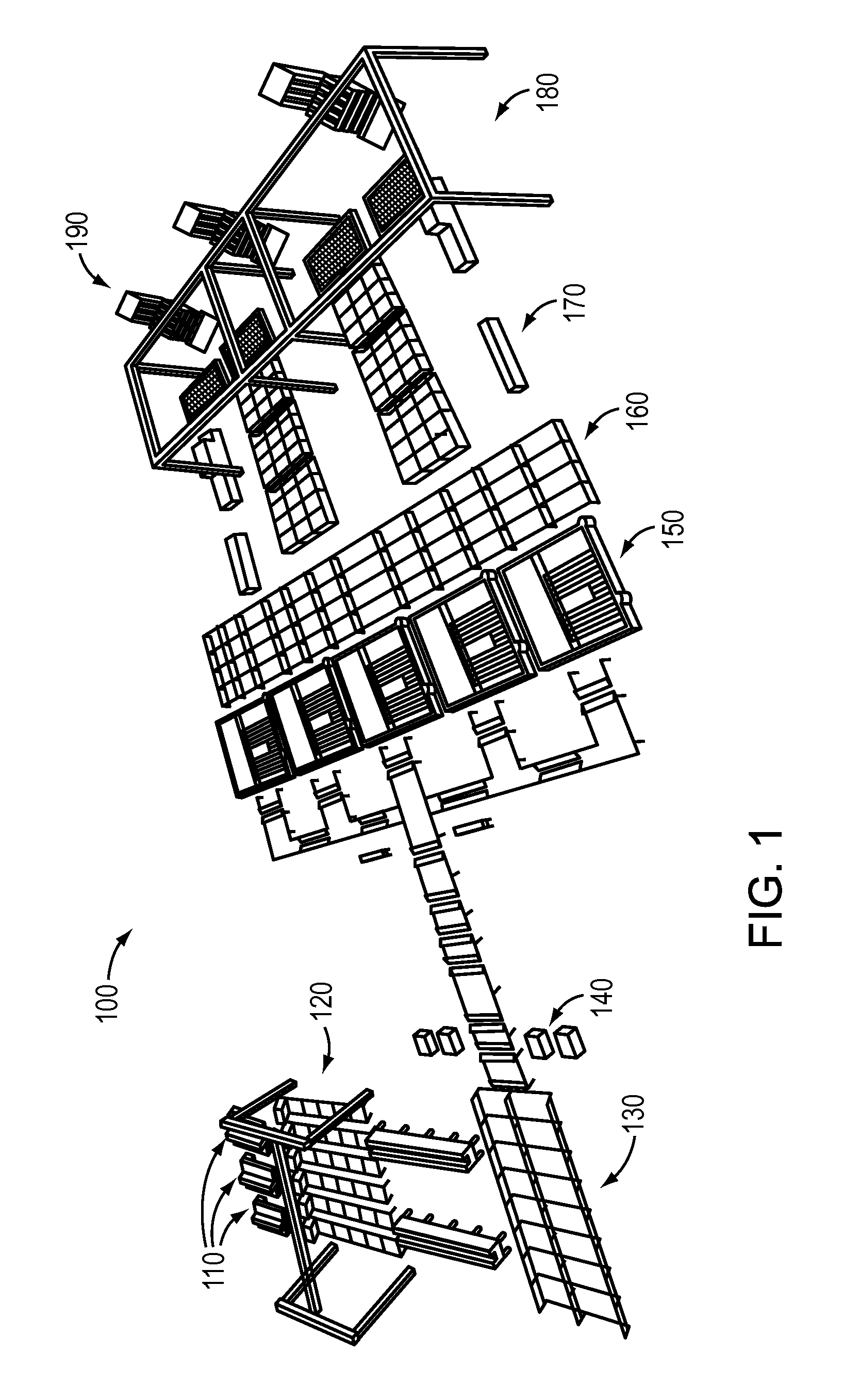Information technology process for prefabricated building panel assembly
a technology of information technology and prefabricated panels, applied in the direction of manufacturing tools, instruments, other domestic objects, etc., can solve the problems of time and expense required to construct a structure, many problems in conventional building construction, and subject to a variety of inefficiencies
- Summary
- Abstract
- Description
- Claims
- Application Information
AI Technical Summary
Benefits of technology
Problems solved by technology
Method used
Image
Examples
Embodiment Construction
[0093] One embodiment of the invention can include a material transport system for use in manufacturing panels for building construction, such as in buildings constructed from steel frame or other appropriate building materials, including, but not limited to, aluminum or other metals, wood, plastics, composite materials, or combinations thereof. The material transport system can include a rail system allowing an empty tray to be loaded with appropriate materials for a specific panel. These trays can then be used to transport the panel materials to different stations on a manufacturing production line. Stations on the production line can include, but are not limited to, pre-welding, construction (at “framing tables”), post-welding, and sheeting stations. The panels can be moved between one or more of the stations on roller systems. The trays for carrying the original materials can be returned to the starting location, either automatically or manually, after delivery of the materials ...
PUM
 Login to View More
Login to View More Abstract
Description
Claims
Application Information
 Login to View More
Login to View More - R&D
- Intellectual Property
- Life Sciences
- Materials
- Tech Scout
- Unparalleled Data Quality
- Higher Quality Content
- 60% Fewer Hallucinations
Browse by: Latest US Patents, China's latest patents, Technical Efficacy Thesaurus, Application Domain, Technology Topic, Popular Technical Reports.
© 2025 PatSnap. All rights reserved.Legal|Privacy policy|Modern Slavery Act Transparency Statement|Sitemap|About US| Contact US: help@patsnap.com



